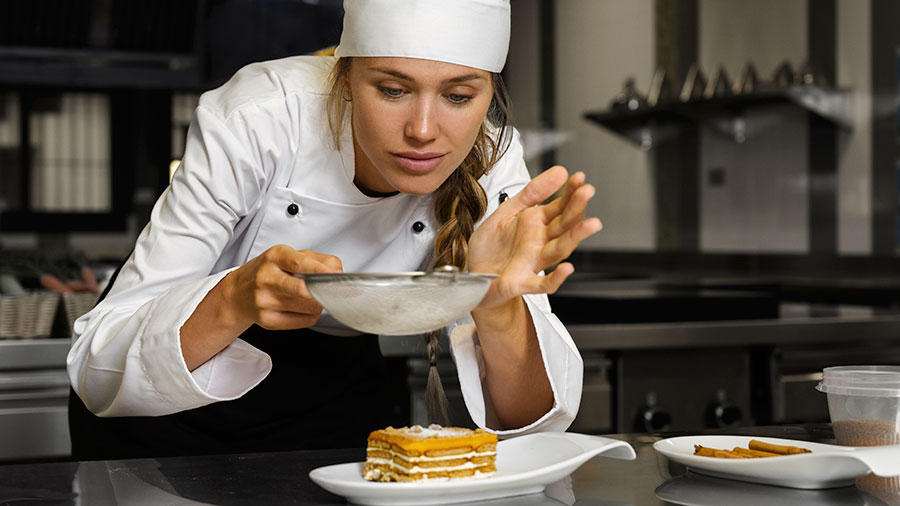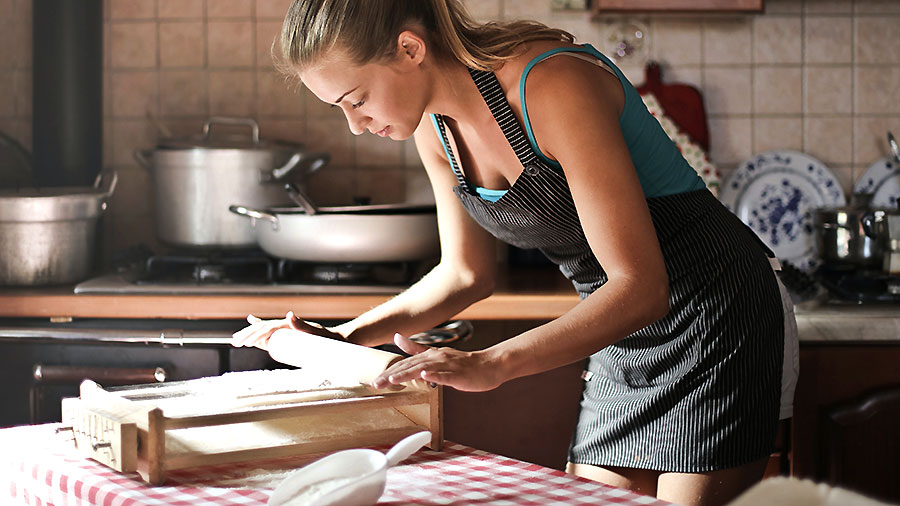Favorite Italian
Ravioli
Ravioli, those charming pockets of pasta, have been delighting taste buds for generations. These versatile parcels can be filled with an array of ingredients, from traditional cheese to innovative flavor combinations. In this guide, we'll delve into the art of crafting ravioli by hand, share a delectable recipe, and offer expert tips to elevate your pasta-making skills.
Chef's Notes:
- Ravioli is a beloved Italian pasta that offers endless filling possibilities
- Creating ravioli from scratch allows for personalization and superior taste
- Mastering the technique of ravioli-making requires patience and practice
The Joy of Homemade Ravioli
There's an undeniable satisfaction in creating ravioli from scratch. While it might seem challenging initially, with a bit of practice, you'll soon be producing pasta that rivals your favorite Italian restaurant. The beauty of homemade ravioli lies in the ability to tailor every aspect to your liking, from the pasta's texture to the filling's flavor profile.
One of the most exciting aspects of making ravioli at home is the freedom to experiment with fillings. While classic recipes often call for ricotta, the sky's the limit when it comes to creativity. Why not try unconventional pairings like roasted beet and goat cheese, or even a decadent truffle and mushroom blend?
Must-Have Tools
Before we jump into our recipe, let's review the essential equipment:
- Pasta machine (or a trusty rolling pin for the traditionalists)
- Ravioli cutter or stamp
- Spacious pot for boiling
- Various mixing bowls
- Fine-mesh sieve
While not mandatory, a ravioli mold can be a game-changer for beginners. It ensures consistency in size and shape, streamlining the process considerably.
Cozy Butternut Squash Ravioli Recipe
Let's create a comforting autumn favorite: butternut squash ravioli with brown butter and sage. This recipe marries the sweetness of squash with aromatic sage, resulting in a dish that's perfect for chilly evenings.
Ingredients
For the pasta dough:
- 2 cups '00' flour
- 3 large eggs
- 1 tablespoon extra virgin olive oil
- 1/2 teaspoon fine sea salt
For the filling:
- 2 cups roasted and mashed butternut squash
- 1/2 cup freshly grated Parmigiano-Reggiano
- 1/4 teaspoon freshly grated nutmeg
- Salt and freshly ground black pepper to taste
For the brown butter sage sauce:
- 1/2 cup unsalted European-style butter
- 12-15 fresh sage leaves
- 1/4 cup grated Parmigiano-Reggiano
Instructions
1. Begin with the pasta dough. In a food processor, combine the flour and salt with a few pulses.
2. Add the eggs and olive oil, then process until the mixture forms a cohesive dough.
3. Transfer the dough to a lightly floured surface and knead for about 5-7 minutes until smooth and elastic.
4. Wrap the dough tightly in plastic wrap and allow it to rest for 30 minutes at room temperature.
5. While the dough rests, prepare the filling. Combine the mashed squash, Parmigiano-Reggiano, nutmeg, salt, and pepper in a bowl.
6. Divide the pasta dough into 4 equal portions. Working with one portion at a time, feed it through a pasta machine, gradually reducing the thickness setting until you achieve the desired thinness.
7. Lay the pasta sheet on a lightly floured surface and place small mounds of filling about 1.5 inches apart.
8. Lightly brush the edges around each mound of filling with water and carefully place another pasta sheet on top.
9. Gently press around each filling mound to seal, taking care to remove any air pockets.
10. Use a ravioli cutter or stamp to cut out individual ravioli shapes.
11. Bring a large pot of generously salted water to a rolling boil.
12. While waiting for the water, prepare the brown butter sage sauce. Melt the butter in a skillet over medium heat until it turns golden brown and smells nutty.
13. Add the sage leaves and cook for about 30-45 seconds until crisp. Remove from heat immediately.
14. Cook the ravioli in batches in boiling water for 2-3 minutes or until they float to the surface.
15. Using a slotted spoon, gently transfer the cooked ravioli to serving plates.
16. Drizzle the brown butter sage sauce over the ravioli and finish with a sprinkle of grated Parmigiano-Reggiano.
Serve hot and savor the fruits of your culinary labor!
Secrets to Ravioli Success
Perfecting ravioli takes time, but these tips will set you on the right path:
- Resist the urge to overfill. A little filling goes a long way in ravioli.
- Pay extra attention to sealing the edges to prevent any filling from escaping during cooking.
- A light dusting of semolina flour before cooking can help prevent the ravioli from sticking together.
- Cook ravioli in small batches to ensure they have enough space to move freely in the water.
- Keep a close eye on fresh ravioli as they cook quickly and can become mushy if left too long.
Nutrition Facts
Here's an approximate breakdown of the nutritional content per serving (4 ravioli) of our butternut squash ravioli recipe:
-
- Calories: 340
- Protein: 13g
- Fat: 19g
- Carbs: 32g
- Fiber: 4g
- Sugar: 3g
Note that these values may vary depending on specific ingredients and portion sizes.
Preservation Methods
If you're not planning to cook all your ravioli right away, you have options. Freshly made ravioli can be stored in the refrigerator for up to 2 days. For longer-term storage, arrange the ravioli on a baking sheet and freeze until solid, then transfer to a freezer-safe bag. Frozen ravioli will maintain quality for up to 3 months.
When cooking frozen ravioli, there's no need to thaw. Simply add them directly to boiling water and cook for a few additional minutes until they float to the surface.
Perfect Pairings
To round out your homemade ravioli meal, consider these complementary options:
- Wine: A crisp Vermentino or a light-bodied Sangiovese can beautifully accompany your dish.
- Sides: A peppery arugula salad or roasted Brussels sprouts provide a nice contrast to the rich pasta.
- Dessert: Complete your Italian-inspired feast with a refreshing affogato or a slice of torta della nonna.
FAQs
How can I prevent my ravioli from opening during cooking?
Ensure your ravioli are well-sealed and free of air bubbles. Also, avoid overcrowding the pot and stir gently to prevent them from sticking to each other or the pot's bottom.
Is it possible to make ravioli without specialized equipment?
Absolutely! While a pasta machine and ravioli mold can make the process easier, you can achieve great results with a rolling pin and a sharp knife. It may require more effort, but creating delicious ravioli with basic kitchen tools is possible.
What's the best method for reheating leftover ravioli?
For best results, gently reheat ravioli in simmering water for about a minute, then toss with warmed sauce. Alternatively, you can bake them in a covered dish with a splash of broth or sauce at 350°F (175°C) for approximately 20 minutes.
Creating homemade ravioli is a rewarding culinary adventure that yields a delicious, customizable meal. With patience and practice, you'll soon craft pasta that rivals any Italian trattoria. So dust off your apron, flour your work surface, and embark on your ravioli-making journey!





























 Gastronomy Cities
Gastronomy Cities
 Amazing Food
Amazing Food
 Chef's Talk
Chef's Talk